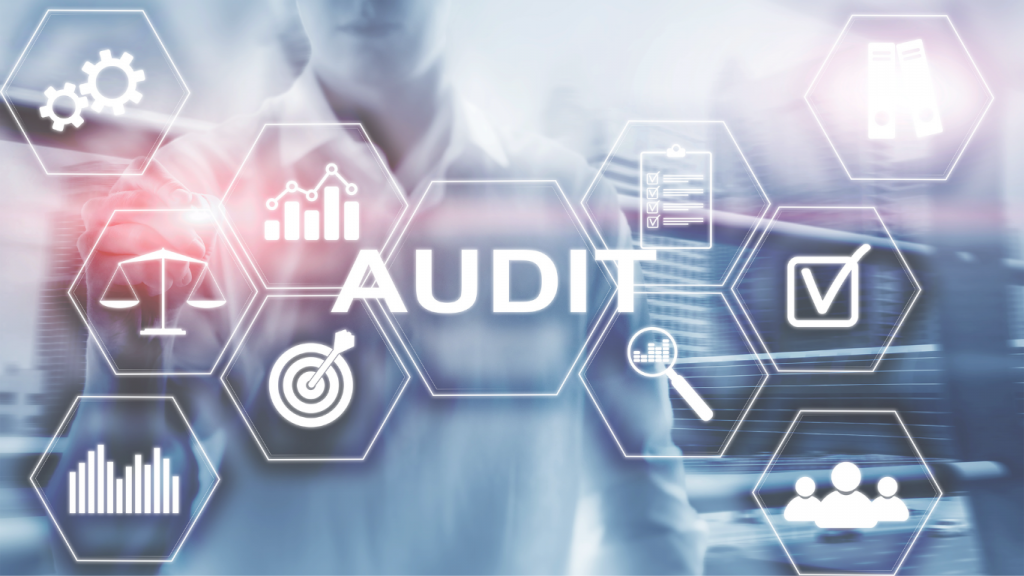Let’s look at the purpose, benefits and considerations of data audits in a bit more detail.
The Benefits of Data Protection Audits
Data protection audits serve multiple purposes – proactively assessing the effectiveness of data protection management systems, and ensuring that policies, processes and procedures align with best practices and legal requirements. Audits also help to identify vulnerabilities and gaps in the system, which can then be addressed to enhance security and reduce the risk of data breaches.
- Raising awareness of data protection, general information security and cyber security
- Demonstrating your company’s commitment to, and recognition of, the importance of data protection and individual rights
- Enhancing trust with the public and your consumers through high levels of personal data protection compliance
- Receiving an independent assurance of data protection policies and practices
- Identifying data protection risks, and receiving practical recommendations to address them
- Improving your confidence in using personal data responsibly
- Continual improvement of your Data Protection Management System
But what does an audit actually audit against?
Understanding Your Data Audit
When preparing for an audit of your data protection management systems, it’s important to understand what you’re auditing against.
- Standards and Regulations: UK GDPR stands as a cornerstone of data protection regulations. Audits assess a company’s compliance with UK GDPR’s principles, which include lawful processing, transparency, purpose limitation, data minimisation, accuracy, storage limitation, integrity, and confidentiality. Standards for Data Protection include ISO27701 (a sister standard to the more commonly known ISO27001), for organisations that already have ISO27001 this makes a very useful companion standard to achieve.
- Legislation: Apart from UK GDPR, there are other important legislations – such as the Data Protection Act 2018 and the Privacy and Electronic Communications Regulations (PECR) that organisations must adhere to. Audits are designed to ensure that your data protection measures align with these legal frameworks.
- Company Processes: Audits also check an organisation’s internal policies, procedures, and controls. This includes reviewing data processing activities, consent management, data retention practices, and breach response plans. Your company’s unique data protection goals and strategies will be assessed against established benchmarks.
Audit Scope
- Observations: Auditors observe the actual implementation of data protection measures to make sure they match documented procedures.
- Interviews: Auditors can carry out interviews with key personnel to assess their understanding of data protection protocols; this helps to highlight any knowledge gaps.
- Document and Records Reviews: Auditors examine documentation, such as data protection policies, consent forms, data processing agreements, and breach notification procedures, to ensure accuracy and completeness for both content of system documentation (such as policies and procedures) and the records that evidence compliance with these documents
- Sampling Techniques: Instead of reviewing every single record, auditors can use sampling techniques to assess a representative volume of records, sufficient to provide confidence that policies and processes are being followed. This means that there will not be a 100% verification that nothing has been missed during most audits.
But what happens if gaps are found?
The point of an audit is not to point fingers and catch people out, it is an activity that should encourage frank and open discussion with the goal of understanding and improving upon compliance risks.
Reporting and Addressing Gaps
Once the audit is complete, the auditor will generate a comprehensive report to outline findings – including areas of compliance and potential vulnerabilities. If gaps in compliance are identified, your organisation must take corrective action. This may involve updating policies, enhancing employee training, implementing new security measures, or amending data processing practices.
The reporting process also serves as a transparency mechanism, demonstrating your commitment to data protection to stakeholders, customers, and regulatory authorities. Additionally, it provides a roadmap for continuous improvement, helping your organisation to evolve its data protection management systems over time.
Compliance representatives will then work with senior management to identify the cause of the findings. Corrective measures should be put in place to stop these happening again. To properly close a finding, auditors should check at an agreed later date, to ensure that the corrective measures are working.
Data Protection for a More Ethical Future
Data protection is not just a legal obligation, but an ethical responsibility. Auditing should be carried out not just to comply with standards and legislation, but to better protect the data of individuals that we have in our care.
Done properly, auditing data protection management systems helps to ensure that we are adhering to standards, regulations, and internal processes. Yet, it also helps to identify and address how organisations view data protection at a moral and ethical level.
Auditing of data protection management systems is an indispensable tool in maintaining compliance, safeguarding sensitive information and ensuring that the culture of your organisation is focused on maintaining data protection activities for the right reasons.
Need help managing the safe use of personal data?
Contact our team for a free consultation.
Read more
Blog – Navigating AI and Data Privacy: 10 Legal Considerations
Blog – AI and Personal Data: Harnessing Personal Data for Progress


